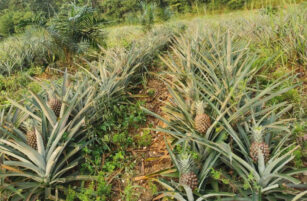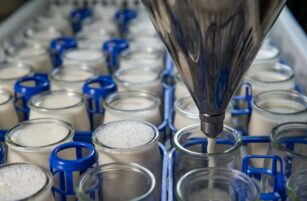- Consumer growth in dairy products will likely be different in the developed and underdeveloped world.
- In the former, liquid milk consumption is declining, whereas in the latter, it’s growing.
- This doesn’t preclude growth in the developed world’s dairy industry, but it’ll need to be innovative or suitable for export, often as processed products.
Constituent Parts
Before we enter the sometimes-complex world of additives, flavourings, probiotics, stabilizers, and others in the next article, it’s useful to know a little about the essential base milk products as they’re often interlinked to higher value supplements and offerings.
Traditionally, the main products derived from milk have been cream, butter and ghee (clarified butter), buttermilk, yoghurt, kefir (a fermented milk drink), curd, and cheese.
There are actually more than 100 other products with either different production techniques or regional variations. For some, there’s scope for more widespread introduction. Look at Crème Fraîche, which may have been a staple in countries such as France and Germany for centuries but can now be found in most American and British supermarkets.
With the onset of industrialization and improved science, liquid milk could be transformed into many new and innovative products, some of which could be stored for many months, or even years. In this category, methods to preserve milk and make it safe are particularly important developments.
Pasteurization
Discovered in the 1860s, this process from Louis Pasteur, originally for wine, was soon adopted for milk and is the single most significant development.
Raw, untreated milk is an excellent host medium for a range of bacteria, some of which are highly toxic such as Listeria, E-coli and Salmonella.
Ultra-High Temperature (UHT) milk, developed in the 1960s, gave a shelf life up to nine months and eliminated the need for refrigeration. I’m often asked whether it’s safe to eat unpasteurized cheese. Unlike untreated milk, illness from eating ‘artisan cheese’ is extremely rare and almost never fatal, contributing to less than 0.5% of all food related sickness. This is because of the antagonistic properties of lactic acid bacteria but also practising good dairy herd hygiene (no mastitis), correct cheese making techniques, and testing, eliminates most of the risk. Illness from hard or more acidic cheese virtually never occurs.

Evaporation
The invention of powdered milk is usually credited to the Russian chemist, M. Dirchoff, in 1832. Nowadays, it’s produced by a dual process of evaporating pasteurized milk to 50% of its volume before spraying it into a heated chamber to produce the powder. Other methods, such as freeze drying, are also possible.
Apart from the obvious benefit of being able to transport and trade an unrefrigerated product that isn’t mostly water, powdered milk is used in a myriad of products from bakery and confectionary to infant formula and is a key part of much of today’s innovative new dairy products. Condensed and evaporated milk are also an offshoot of this innovation.
Homogenization
The process of forcing milk at high pressure through small holes reduces the size of the fat globules in milk, allowing them to be dispersed evenly throughout the rest of the milk to give a uniform product. It’s important as, in this way, different fat contents of milk can be produced. This includes 2% milk (low fat), which is in high demand in the modern era.
Refrigeration
As milk and related products are perishable, the advent of refrigeration and cooling revolutionised the supply chain. Transportation over longer distances became possible, but another important offshoot of this chilling process is the large volumes of ice cream we consume.

There are several other industrial processes that are used to transform milk into useful end products. The two most important are casein extraction and whey and lactose extraction.
80% of the protein in cow’s milk is casein. Casein provides a rich source of amino acids, carbohydrates, calcium and phosphorous. There are two methods of extraction from skimmed milk: precipitation by acid or coagulation using rennet. In the acidic method, casein is dissolved in sodium hydroxide to produce sodium caseinate. In the coagulation method, rennet is added to the milk before decanting, washing, and drying.
Casein is found in almost all dairy products, but also in a wide range of non-dairy foods such as processed meats and bread. It’s sold as either an ‘edible’ or ‘technical’ grade’ powder (for many industrial purposes), with a given mesh size. An alternative use of whey is in animal feed, particularly to feed pigs in a mixed pig-dairy cheese making farm.

You may be familiar with whey as the liquid that’s left over from straining and curdling in cheese making. Whey filtered to separate out the protein portion is used in sports nutrition products and infant formula. Lactose is the sugar content of milk (galactose and glucose). It can be extracted from the filtered remains of the whey (the permeate) and is used in seasonings and bakery products as it carries colours and flavourings well. It’s also found in less obvious products such as canned fruits and vegetables, and soups. From this route also come many pharmaceutical uses of lactose. Lactose acts as a filler and a binder in around 65% of prescription drugs.
Diversification
Now we’ve demonstrated both the versatility and value of cow’s milk, we’re ready to discuss how it’s transformed into higher value end products.
Other Insights That May Be of Interest…













